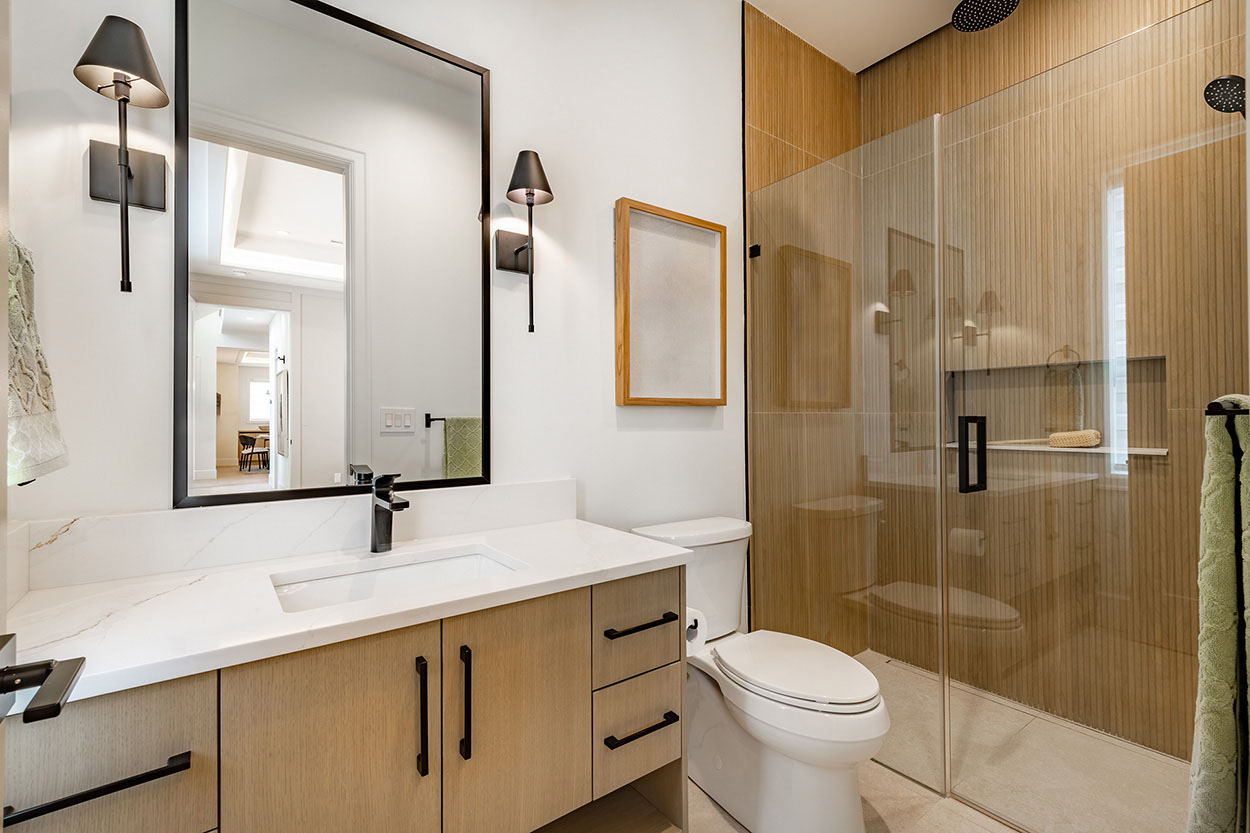
Introduction to Bathing Options
The bathroom is more than just a functional space in an area that can significantly influence your daily routine and well-being. Choosing between a tub and a walk-in shower involves balancing practical needs with personal preferences. Each option brings its own unique set of features, offering distinct experiences tailored to different lifestyles. For some, the appeal lies in the modern, streamlined design of a shower that prioritizes convenience and space efficiency. For others, the comfort and tranquility of a tub provide an unmatched opportunity for relaxation. Factors such as accessibility, design preferences, and how you use the space all play a role in determining the right fit for your home. While aesthetics is important, it is equally essential to think about long-term functionality and how these choices align with your habits and needs. This decision is not solely about style—it is about creating an environment that supports both practicality and comfort.
Advantages of Walk-In Showers
Walk-in showers are a popular choice for modern bathrooms, offering a seamless blend of functionality and style. Their open design creates the illusion of more space, making them an excellent option for smaller bathrooms or areas where maximizing square footage is a priority. The use of customizable tile features allows homeowners to tailor the look of the shower to complement the overall aesthetic of their space, ranging from sleek, neutral tones to bold, creative patterns.
One of the standout features of walk-in showers is their accessibility. They eliminate the need to climb over a tub wall, providing a safer and more convenient option for those with mobility concerns or for families with young children. The lack of barriers also makes them ideal for incorporating into a universally designed home, supporting ease of use for people of all ages.
Additionally, walk-in showers often come equipped with features that enhance the bathing experience, such as rainfall showerheads or multiple spray options, adding an element of luxury to everyday routines. Their minimalistic structure also means fewer hard-to-reach corners, which can make regular cleaning and maintenance less of a hassle. By combining safety, customization, and efficiency, walk-in showers have become a go-to solution for individuals looking to optimize their bathroom space while still maintaining an elevated design.
Benefits of Traditional Tubs
Traditional tubs offer a unique opportunity to transform your bathing routine into a restorative ritual. Unlike showers, which are often associated with efficiency, tubs create a setting that encourage slowing down and disconnecting from the fast pace of daily life. The warm water of a tub can help soothe tired muscles, improve circulation, and provide a sense of calm that is difficult to replicate with other bathing options. For individuals dealing with stress or physical tension, the therapeutic benefits of soaking in a tub can be especially appealing.
In terms of design, traditional tubs come in a wide variety of styles and materials, allowing homeowners to choose options that align with their preferences and the overall look of their bathroom. Whether you are drawn to the timeless elegance of a clawfoot design or the contemporary appeal of a sleek freestanding tub, there is an option for every aesthetic. Additionally, some tubs come equipped with features such as whirlpool jets, which can enhance the relaxing experience and add a touch of luxury to your space.
Tubes can also serve practical needs, especially for households with children. The depth of a tub makes it easier to bathe young children compared to a shower, adding another layer of functionality. This versatility makes traditional tubs a well-rounded choice for many homeowners seeking both comfort and practicality.
Maintenance and Cleaning
Keeping your bathroom fixtures in good condition requires understanding the unique care needs of each option. Walk-in showers often feature tile surfaces that are resistant to water damage and staining, but the grout lines can accumulate dirt and require regular scrubbing or resealing to prevent discoloration. Shower glass, while visually appealing, may develop water spots or soap buildup, calling for routine cleaning with appropriate products to maintain clarity.
Traditional tubs, on the other hand, typically have smooth surfaces made from materials like porcelain, acrylic, or enameled cast iron. These surfaces are simple to wipe down, though soap scum and mineral deposits can build up over time, particularly in homes with hard water. For some, soaking the tub in a cleaning solution periodically may be necessary to keep it looking fresh and hygienic.
Regardless of your choice, proper ventilation is key to minimizing moisture-related issues like mold and mildew in both walk-in showers and tubs. Regular attention to cleaning and maintenance will not only preserve the appearance of your bathroom but also ensure the longevity of your fixtures. Choosing high-quality materials for either option can reduce the frequency of maintenance required, as durable surfaces are better equipped to withstand wear and tear over the years.
Conclusion: Making the Right Choice for You
Choosing between a walk-in shower and a traditional tub requires thoughtful consideration of your unique needs and the way you use your space. A shower may be the better fit if you prioritize accessibility, efficient use of space, or low-maintenance cleaning routines. The streamlined design of walk-in showers can complement modern aesthetics and provide a convenient, everyday solution.
Conversely, if relaxation and comfort are at the top of your list, a traditional tub offers a space to unwind and enjoy the restorative benefits of soaking. Tubs can also cater to practical needs, especially for households with young children or those looking to integrate therapeutic features like whirlpool jets into their routine.
Beyond functionality, it is essential to think about how these options align with your long-term lifestyle. If you are planning for a universally designed home, a shower with a barrier-free entry could better serve future needs. However, if you view bathing as a time to reset and rejuvenate, investing in a quality tub may be worth considering.
There’s no one-size-fits-all answer. Reflect on your priorities, the layout of your bathroom, and the role you want this space to play in your daily life to decide that truly complement your home.
